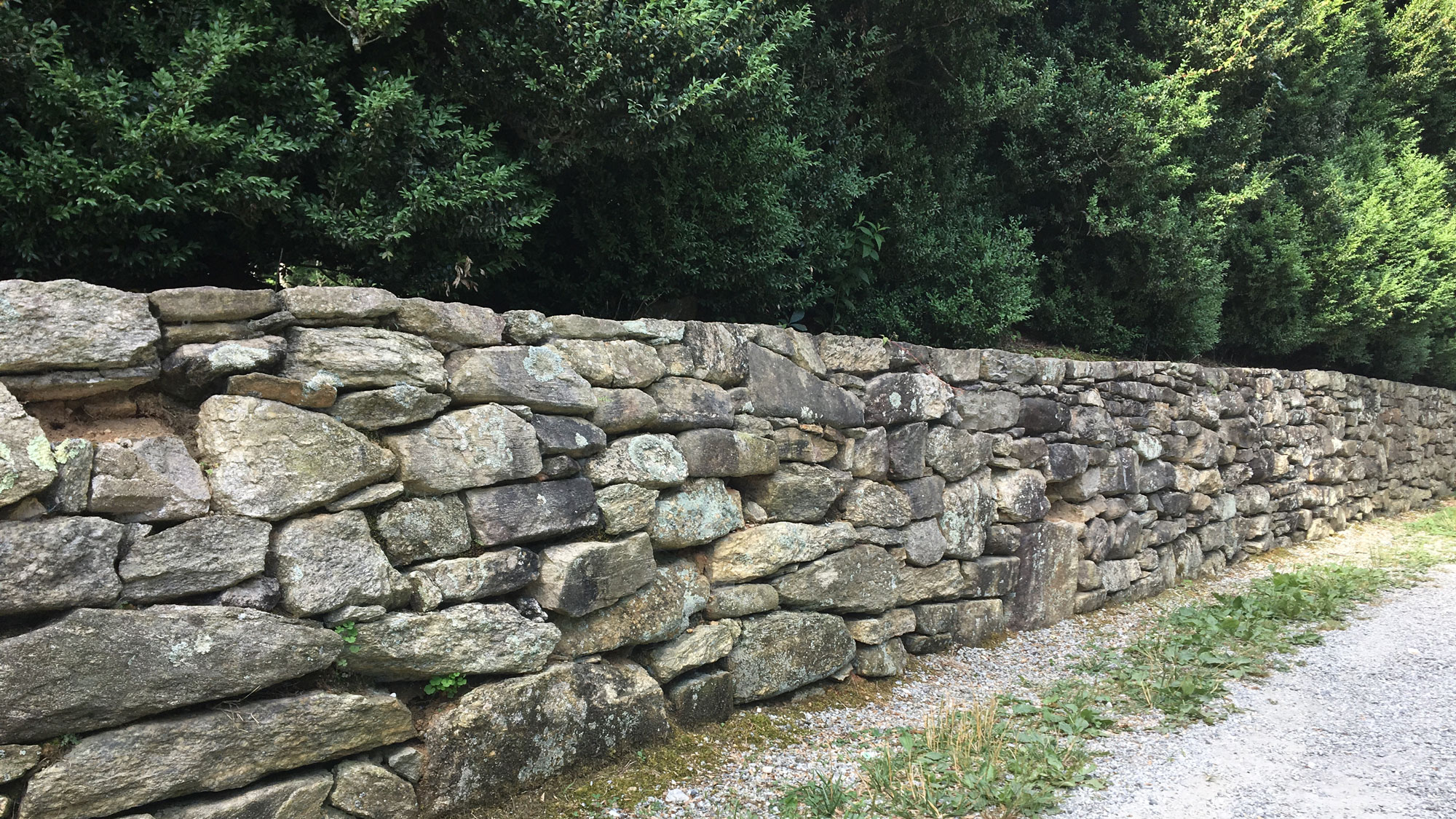Lilian's Legacy
/In a few short weeks, spring will arrive once again at the Carl Sandburg Home here in Flat Rock. Forsythia will begin blooming on the bushes near the house. Daffodils will dance in the grass, and baby goats will start emerging from the barn sporting jaunty colorful sweaters. We can thank Lilian Steichen, Carl’s wife, for this annual spring treat.
Carl and Lilian Sandburg in 1923.
(Photograph by Edward Steichen)
Lilian, like Carl, was the child of immigrants who affectionately called her Paus’l. She was born in 1883 to parents who came to America from Luxembourg. Lilian and her brother Edward (who later became a world-famous photographer) grew up on a farm in Wisconsin. Fiercely independent and academically brilliant, Lilian graduated with honors from the University of Chicago in 1903. An idealist, she was passionate about politics and philosophy and became a member of the Socialist Party. She had a job translating quotations from Latin and German into English, and then taught English, Latin, drama and elocution at high schools in North Dakota and Princeton, Illinois.
One cold December day in 1907 at the Socialist Party headquarters in Milwaukee, Lilian was just leaving a meeting about translating German literature into English for distribution. When she emerged, a thin young man named Carl was in the waiting room. The two were introduced, and smitten, Carl asked her to dinner. She politely refused, but he persuaded her to give him her address as he said he wanted to share some of his writings with her.
And so, early in 1908, Carl Sandburg, 30, and Lilian Steichen, almost 25, began a correspondence that evolved from idealist discussions of philosophy, socialism, and poetry to more personal expressions of their thoughts and feelings for one another. Lilian admired Sandburg’s political activism and his concern for the common man, and she began to fall in love with Carl, the poet. Their letters grew increasingly longer and more intimate, as Carl was also falling in love with the beautiful and brilliant school teacher.
After weeks of writing to one another, they agreed to meet in March at Lilian’s parents’ farm near Milwaukee. A week of being together solidified their love, and they decided to marry. Their letters became passionate vows of love and expressions of joy at finding their soul mates. Lilian told Carl that her family called her Paus’l but her little niece found it hard to say and called her Paula. Carl liked the name and called her Paula, or Pal, ever afterward. She sometimes called him Cully or Sandy, and they often referred to each other as the S-S, not only for Steichen and Sandburg, but also“for two Souls”.
Lilian and Janet in 1916 (nps.gov)
Despite Carl’s literary prowess, he was self-conscious about his lack of a college degree. He admired Lilian’s academic accomplishments and her intellectual powers. She had enjoyed living independently in Milwaukee and Chicago, two of the most vital and experimental American cities of the day. She had a sophistication that Carl had not and a clear sense of who she was and what she valued. Carl found her knowledge and self-assurance deeply compelling and told her she was his “Coach… Teacher….and Great Heart .“
Their love story continued throughout their many years of marriage. Their family expanded with the birth of three daughters, and then later, two grandchildren. Carl’s literary career blossomed, and they moved as his fame grew. Lilian was the anchor of the family, handling her husband’s work details and schedule, and proofing his writing before it was sent to his publisher.
It was Lilian who designed the home they built on the shores of Lake Michigan in 1927, a house jutting up from the crest of the dunes with windows open to the lake and shore. They named it Chikaming Farm. Lilian supervised the construction, managed the money, and filed their taxes. Carl called her “Mrs. Fixit” because of her ingenuity and mechanical skills. Lilian and her children became expert gardeners, growing most of their family’s food supply and caring for farm animals that included geese, ducks, chickens, and rabbits.
Lilian Sandburg with Goats at Connemara
(Photograph by June Glenn, Jr.)
Youngest daughter Helga however yearned for a milk cow and pleaded with her parents to get one. Lilian gave in, but Carl resisted. “No, she can’t handle a cow. And a cow’s expensive. How about a goat?” So, Lilian and Helga set out to search for a goat and bought three. Soon Lilian bought 2 more. For years she could drink very little cow’s milk, and when someone told her that goat’s milk was good for stomach problems, she tried it and found it to be true. From that time on, goat’s milk, cheese, and ice cream were staples in the Sandburg family’s diet. Sandburg called the summer of 1935 the season of the three Gs – “garden, geese and goats.”
For years, Lilian had wanted to do some serious farming, and so she plunged into learning everything she could about breeding dairy goats. By 1937, she had built a herd of Advanced Registry does and bucks, and her Nubian buck was the first of his breed to qualify in the United States. She began to earn the respect of the goat industry and published articles in goat journals on breeding and the making of goat cheese. She was asked to make speeches, consult with breeders and agriculture schools and was often traveling as much as her husband.
By 1945, however, the Sandburgs decided it was time to leave their house on the dunes for a more spacious home and farm and milder winters. Lilian began looking for a place that would support her thriving goat herd and that would give Carl solitude and privacy. She began researching various parts of the country, studying mean temperatures, rainfall and other conditions.
Carl and Lilian "Paula" Sandburg with part of Chikaming goat herd. Original photograph published in "Friends" magazine. Reproduced in George Swank's " Carl Sandburg: Galesburg and Beyond." Carl Sandburg Historic Site Association
Lilian’s brother Edward Steichen and his wife had loved western North Carolina since staying in Asheville in the 1920’s, and Lilian also had fond memories of the area where she and two of her daughters traveled in 1940. They looked at properties available and discovered Connemara, near Flat Rock. Connemara was 245 acres of mountain, meadow and forest land with a single spacious house at its heart, built between 1836 and 1838 by Christopher Memminger, a member of Jefferson Davis’ Confederate Cabinet. It’s most recent owner, South Carolina industrialist Ellison Smyth, had died there in 1942. When the Sandburgs saw it, they knew they didn’t need to look further. They bought the property for $45,000. In late November of 1945, Lilian and part of the family drove to North Carolina in their station wagon pulling an old trailer carrying 16 of their blue ribbon does. Helga shipped 22 more goats from Michigan later.
The family was enchanted with Connemara. Lilian wrote:
“We found that our land goes over the top of Little Glass Mt and up to the very top of Big Glass Mt- at least a mile of real climbing from the house….The hills will be white with dogwood blossoms in Spring. There are many trails and paths through the mountain… From the top of Big Glassy you can see all over Hendersonville and the country about, Smokies & Blue Ridge….in every direction you are ‘on top of the World!’”
Lilian and her daughters tended the Chikaming Herd with daughter Helga taking on most of the dairy production. Helga was her mother’s “Barn Boss”, who rose before dawn to do farm chores and work with the goat herd. Helga’s children ran freely about the farm , beloved by their grandparents. “What a house!” joked Carl. “Women managing everything.”
Lilian and her daughters Janet and Helga went to goat shows around the mountains. Their prizes were displayed in Lilian’s farm office. Later the ribbons and trophies were interspersed with awards that Carl had received, “an affectionate parity of poetry and goats.” She was respected as a national expert, and local famers also knew they could turn to her for advice.
This striking image of Lilian "Paula" Sandburg, taken by NPS photographer Cecil Stoughton (former White House photographer who took the famous photograph of President Johnson being sworn in alongside Jackie Kennedy) in 1967, is preserved in the park's archives.
And so, the family spent golden years at Connemara until Carl’s death in 1967. He died in the house he loved with his beloved Paula, his Pal by his side. His last word was “Paula.” Lilian was 94 when she died in 1977. Lilian and Carl’s enduring love was documented everywhere in letters, poems, and deeds. He was the Eternal Hobo. She was the quiet center, deeply contented at home. She told a reporter in 1964, “We never tried to ‘remake’ each other.” In a later interview she said, “he always wanted me to do what I wanted to do, and I always wanted him to do what he wanted.”
And so, when spring comes again to Connemara, and visitors walk the trails to Big Glassy, admiring the beautiful meadows, and smiling at new kids frolicking near the goat barn, perhaps they will remember not one, but two Sandburg’s, For Carl and Lilian -Sandburg and Steichen,- were, and always will be “S-S”, two great Souls.
Excerpted and paraphrased from Carl Sandburg: A Biography by Penelope Niven.
The touch of your hand is hope
And the sheen of your hair is glory.
You are the sea with its mystic song,
You are the stars and the dawn and morning,
You are a woman, you are a comrade…
Carl Sandburg, “You”, 1908








